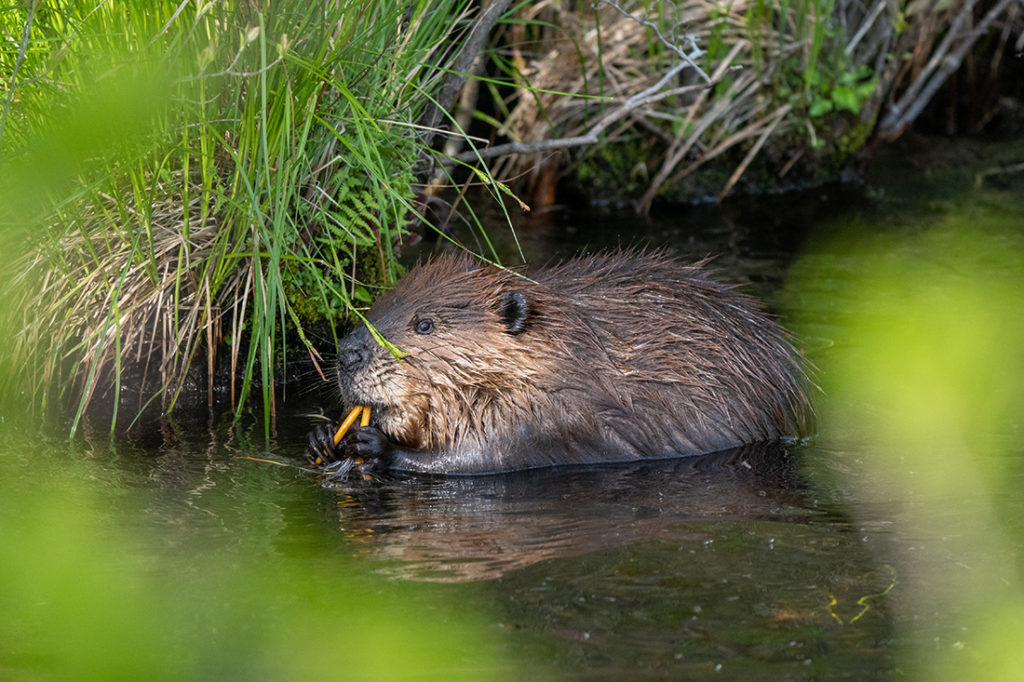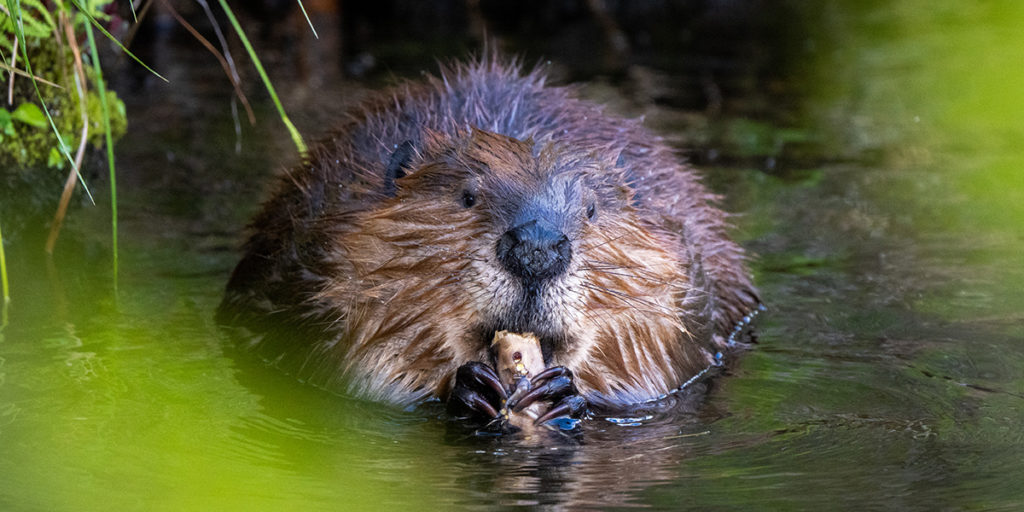Did you know that beavers only eat the bark off branches? Well, sometimes they eat the buds and roots of their favorite trees, like willow, maple, poplar, beech, birch, alder and aspen trees. I also have been closely following one beaver lodge on the river near my house, where they busily set up a lodge and dam through the cold winter months. Now that spring is here, they are tending to their young beaver kits. Young beavers will stay with their family up to two years before they leave to start their own homes.

Beavers in the Rappahannock River Watershed
This winter I saw more beavers than I could remember, and so I started asking around to learn more about this amazing species. Does seeing more beavers mean that our rivers and streams are healthier than ever? I sure hope so! One thing I know for certain is that we need beavers as our stream restoration and water quality allies for the Rappahannock River and Chesapeake Bay watershed.
North American beavers (Castor canadensis) have long populated freshwater streams from mountains to tidewaters and play an especially important role in developing hydraulic systems that connect groundwater to surface water. One study shows that in the Piedmont regions of North Carolina and Virginia, beavers alone in their dam-building activities can park some 22 million tons of sediment per year behind their low-lying dam structures, along with significant deposits of carbon that are corralled as woody debris in beaver ponds. Beavers’ engineering amplifies the efforts of rivers’ natural processes to create sinuosity and complexity, all the while slowing and spreading water across floodplains.
Living in Harmony with Beavers
Many people think that beavers cause floods or will destroy their property and trees. In reality, this fear is worse than any damage a beaver could do. Also, there are several ways for landowners to coexist with our beaver friends. Tricks like wrapping wire mesh around trees a landowner wants to protect from a beaver, or even employing wildlife-friendly beaver-habitat management techniques, can go a long way as preventative measures so that the imagined worse-case scenario never happens.
We learned about some management techniques from a beaver expert named Skip Lisle, who came and gave a presentation to PEC’s staff early last year. Skip owns a company called Beaver Deceivers, which uses built structures and techniques to help people solve beaver-human conflicts and improve wildlife habitat. Indeed, beavers and people can live in harmony.
Beaver dams are, on average, no greater than 1.5 meters above the surface of water and are never built as permanent structures. Beavers build their in-channel dams the full width of a stream, from one bank to the other. These dam structures typically have a series of step pools that help slow, spread and sink water into local groundwater tables. In most cases of commonly recurring floods–one-to-two-year storm events—a beaver dam might actually reduce flood damage because water can spread out and slow down across the wide floodplain created by beaver dams, rather than rush at high velocities that damage downstream structures and streambanks.

Beavers for the Bay
One might marvel at the concept of sitting back and letting beavers do the work of stream restoration and carbon sequestration, when many local communities struggle to meet water quality goals that would reduce the amount of pollution that flows downstream to the Chesapeake Bay. But our uncanny castor conservationist friends are ready and willing to do the job for free! Fishermen, too, can count on the beaver to help bring back brook trout and other fish species that thrive in a beaver dam’s deep, cool pools shaded by willows (a favorite beaver snack) and filled with insects (a favorite fish snack) along Piedmont streams.
Let’s celebrate beavers for the real watershed heroes they are!
Learn more about our furry, watershed-loving beaver friends:
- Beaver Believers, from just this past March 2021 in the Chesapeake Bay Magazine.
- Human-Beaver Coexistence, Clifton Institute: This resource outlines safe and effective beaver management options for Virginia landowners. Produced by the Clifton Institute, February 2021.
- 9 Amazing Facts about Beavers, Chattahoochee Nature Center.
- Beaver Deceiver: A flow-device that manages beaver habitat so that no beaver is ever removed or killed from a pond, stream or wetland.
References:
Burchsted, Denise; Daniels, Melinda; Thorson, Robert; and Vokoun, Jason, “The River Discontinuum: Applying Beaver Modifications to Baseline Conditions for Restoration of Forested Headwaters” (2010). Center for Integrative Geosciences. https://opencommons.uconn.edu/geosci/
Kroes & Bason: “Sediment Trapping by Beaver Ponds in Streams of the Mid-Atlantic Piedmont and Coastal Plan, USA” Southeastern Naturalist,14(33): September 2015. Pages 577-595.
